Drip irrigation systems: what are they and how do they work?
Using drip irrigation systems instead of a sprinkler or hose can save up to 70% water consumption in your backyard – we explain everything you need to know


In these times of extreme weather and extended drought, drip irrigation systems enable us to manage how we water our choice of garden plants.
Increased water restrictions are not going away and, in years to come, the liberal use of garden hosepipes and sprinklers will be frowned upon as an extravagance. So, the conscious and effective watering offered by drip irrigation systems is sure to become more widely used.
But what exactly is drip irrigation and how can you make use of it when watering plants in your own backyard to save water, and keep your garden alive in periods of drought? We explain all.
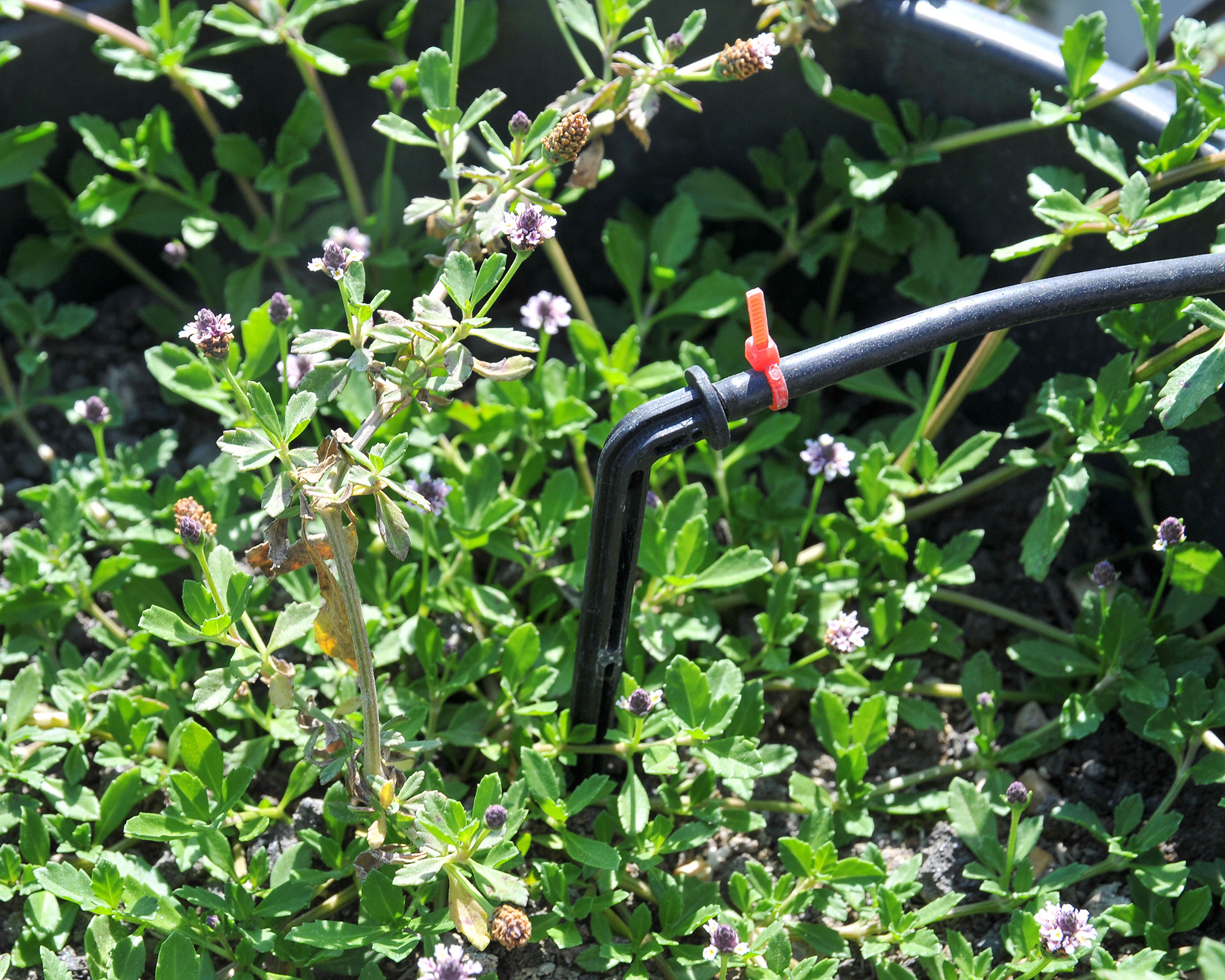
Start off by using a drip irrigation system for your container plants to get used to how they work
What are drip irrigation systems?
Drip irrigation is a watering method that has been used in commercial agriculture and horticulture for years. It gets water directly to young plants in an economic and targeted fashion, at the best time to water plants, with as little waste as possible.
Edward Cantle, an expert from Gardena explains: 'Drip irrigation systems offer a great alternative to conventional watering methods, such as a garden hose.
'They work by gradually drip-feeding water directly next to the plant, which allows the water to penetrate the soil right down to the roots, saving up to 70% water consumption, compared to standard irrigation systems.' He adds that this also promotes plant health, by leaving them less susceptible to disease.
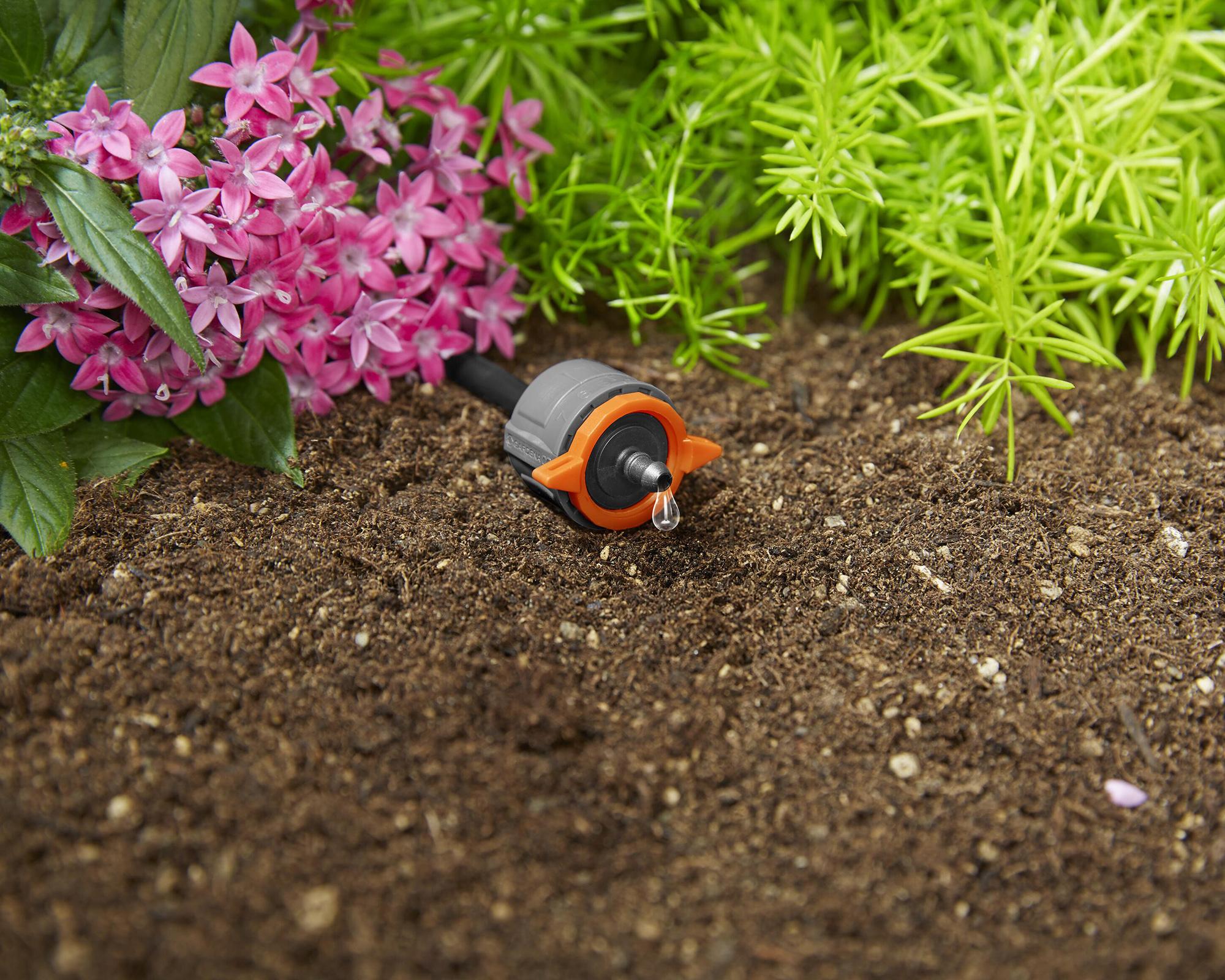
How do drip irrigation systems work?
By laying a system of pipes and small drippers through planting areas, the water can be fed directly to the roots of the plants.
They take advantage of the natural capillary action in the soil and allow moisture to be absorbed by the roots as needed, with less evaporation from the surface.
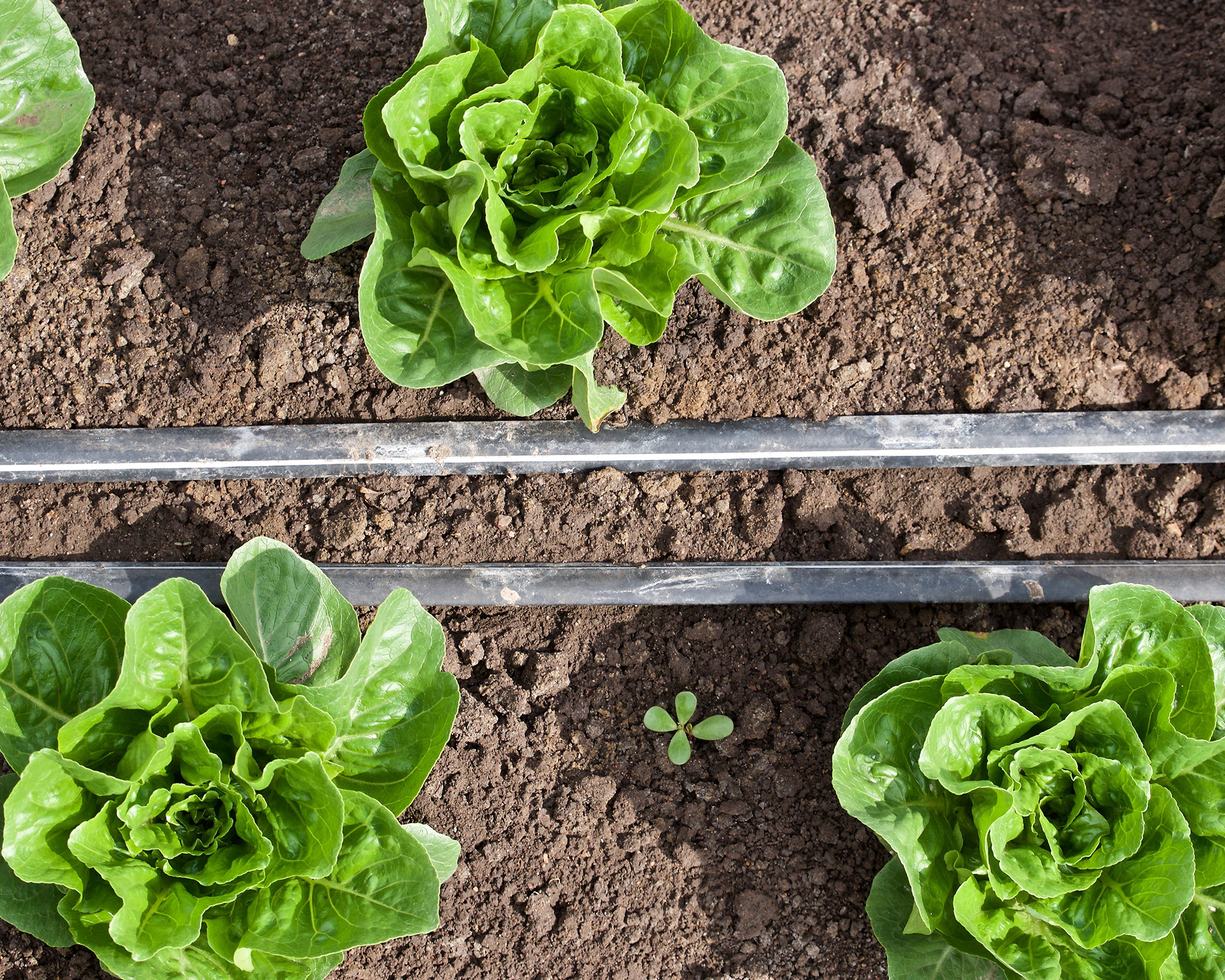
Keep your crops healthy and well-watered
Are drip irrigation systems easy to install?
Sean Lade from specialist supplier Easy Garden Irrigation describes how most systems are installed: 'First, there’s a connection to a garden tap and from there you run a half-inch supply pipe that basically acts like a motorway to carry water around the garden, past all the plants you want to water. Then you spur off into micro-size pipes, ¼ inch thick, that reach to the plants themselves and then a drip emitter regulates the release of the water.'
It’s usually recommended that you use one distributor per plant, which works well for garden planters and smaller areas – although you can share one emitter among a smaller grouping of plants. For larger areas, a drip line is recommended with built-in emitters along the length of the pipe.

A system from Easy Garden Irrigation will keep your garden hydrated
What are the advantages of drip irrigation?
Because the water is delivered exactly where it needs to go, you use less and waste less – perfect if you're looking for water saving methods. As the experts at Water Irrigation point out, 'water is delivered with pinpoint accuracy directly to the root zone of the plant. This minimizes wastage and weed growth in the surrounding areas of the plant.'
For example, a system with 50 drippers used twice a day for 30 minutes will save up to 70% of water compared to a sprinkler or soaker hose. And for this reason, in many areas, drip irrigation systems are permitted even in times of official drought and hosepipe bans – although you should always double-check with your local provider.
'As water application is slow and controlled by each emitter, the water has time to soak into the soil preventing surface runoff,' Water Irrigation adds.
It is important to use a timer with your system. This means you can water first thing in the morning, so you'll get the most out of your watering at the coolest time of day without getting out of bed. Plus, you don’t have to remember to turn off the system. And drip irrigation systems are ideal for watering plants while away.
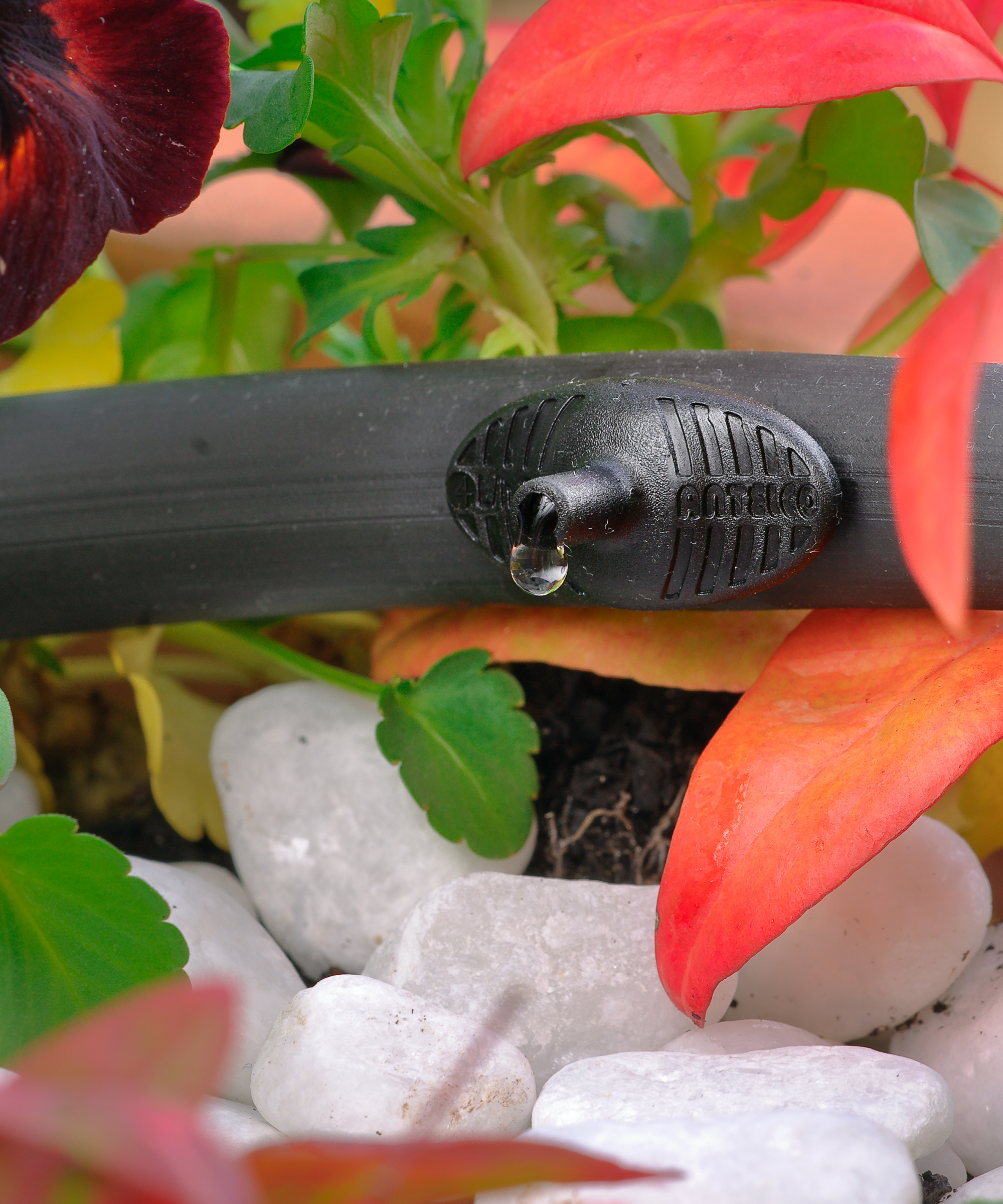
This drip irrigation system is also from Easy Garden Irrigation
What are the disadvantages of drip irrigation systems?
The key disadvantage is the time it takes to lay out the system. And, some people might not like seeing the tubes, pipes, and kit on view. But there are ways to disguise the pipes, just as there are creative ways to hide sprinkler valves.
They are great for gardens of all sizes, but for larger plots, you might well need some professional help to make sure your watering circuit is working to maximum effectiveness.

Irrigation systems can be neatly installed in flower beds
Are drip irrigation kits easy to use?
Drip irrigation is becoming increasingly popular with home gardeners because it’s an effective way of watering the garden. The new kits on the market are much easier to install and work for containers and pots as well as larger flower beds.
We’ve come a long way from the days of ‘leaky hose’ watering pipes that effectively sweat out water unevenly across a planting area.
Other great water-saving methods include rain chains and rain barrels. These are great ways to collect rainwater if you prefer the rainwater benefits for watering plants.
Should you bury drip irrigation systems?
You definitely should not put your pipes and drip emitters under the soil – if you bury the system, you run the risk of damaging the pipes if you can’t see them.
'You can easily put a spade through the pipe,' says Sean Lade. 'But you can hide them with a layer of mulch or bark chippings, which will make it more efficient and help to retain moisture in the soil.'
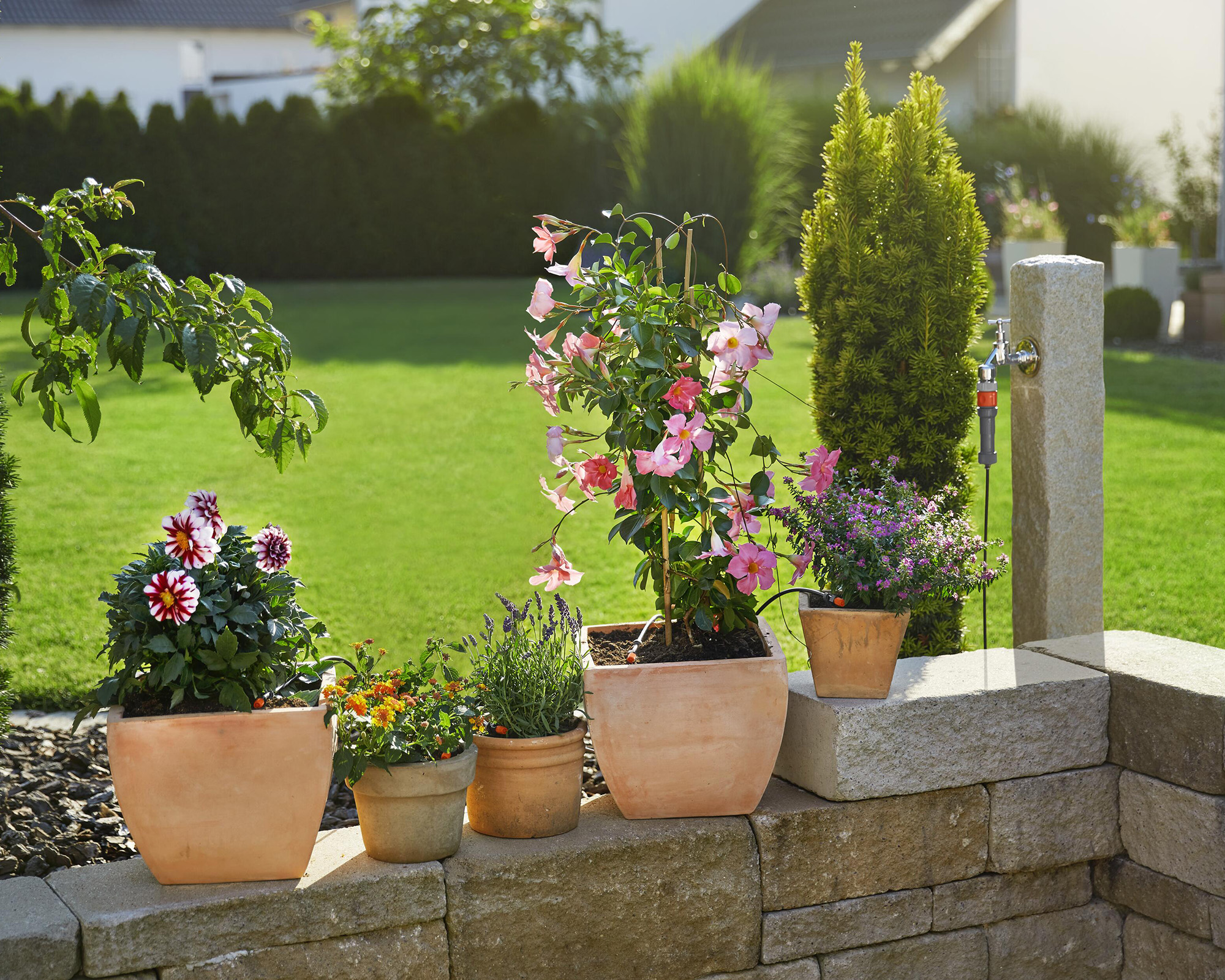
Gardena drip irrigation systems can be linked up to your patio containers
Can you make a drip irrigation system yourself?
There are many different kits available with parts that you can scale up or down according to the size of your garden, and most good suppliers offer great advice and customer service. Price-wise, drip irrigation kits at Amazon start at around $30 at the lower end of the price scale. It is also possible to make a DIY drip irrigation system to keep costs down.
As with the best garden sprinklers, most drip irrigation kits can be added to and expanded as required, and with good maintenance and regular checks, they have a lifespan of between 10-15 years.
Watering our plants and gardens is essential to ensure good, healthy growth, but it’s also vital to manage our watering. If you’re not sure about investing in a kit for your whole garden, you could try one of the smaller-scale setups, to keep your pots watered while you’re on vacation. That way, you won’t have to rely on friends and neighbors to keep your plants healthy.

In her years of gardening, Camilla has designed planting schemes for gardens large and small in and around London, written about plants and how to grow them, and worked on BBC gardening TV shows. She's passionate about sharing tips, advice and the joy of plants in this great community of gardeners that we’re all part of, and she now also works as a therapeutic horticulturist, teaching growing for wellbeing and mental health. Her unfulfilled ambition is to crack the ultimate dog-friendly garden - she thinks getting it right depends more on the dog than the plants...
